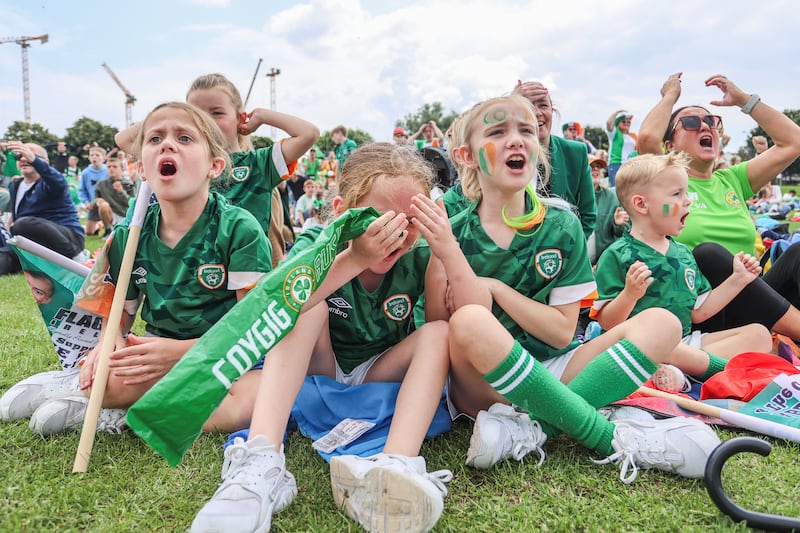The width of the crossbar was the difference in the 2010 Under-21 All Ireland final between Dublin and Donegal. We played that final in Breffni Park in Cavan and when it hit, a loud ping could be heard all around the ground. The ball firmly rebounded off the crossbar and up into the air where it was punched to safety. It was the last kick of the game. A Michael Murphy penalty.
Managed by Jim McGuiness, that Donegal team brimmed with quality. Alongside Michael you had Mark McHugh, Antóin McFadden and Leo McLoone, to name a few. There was very little between us – the final score moments later was 1-10 to 1-8. Literally just the kick of a ball between us.
That crossbar in Cavan has always stayed with me as an example of how small things matter. At the time, it was the old-style rectangular shape, basically a flat-faced bar across from one post to the other. But when you go to Breffni Park now, the goalposts have changed and the crossbar is more of a rounded pole.
What if Murphy had been taking his penalty into goals with a round crossbar instead of a flat one? Where would the ball have deflected? Could it have caught the underside and flicked into the net? Could it have bounced down and fallen to a Donegal player rather than way up into the sky before being punched clear? Our All-Ireland came down to the shape of a crossbar. You can’t get smaller than that.
Seán Moran: League’s championship promise may be clouding but it remains bright at the top
Malachy Clerkin: The GAA should make more of St Patrick’s Day - and more of its intercounty stars
Sports Review 2023: Mary Hannigan picks the best quotes from the sporting year
GAA happy that GAAGo has ‘bedded in well’ as 2024 season launches
It’s the first weekend of June. We’re coming into the part of the season where the difference between staying alive and leaving the stage is going to come down to very small margins. Last weekend there were four games – Armagh won by a point, Cork won by two and the other two games were draws. A single kick of a ball in each game would have changed the result. One change in trajectory, force or angle and the tables look different today.
Two weeks after that under-21 final a great friend of mine, David Quinn, and I headed off to Boston for a J1. We lived just off Western Avenue in 7 Raymond Street. We were well looked after by the Armagh club. A real family ethos with a love two things – football and fun.
[ Student Hub: No shortage of advice for students as J1 season approachesOpens in new window ]
We stayed with a bunch of lads from all around Ireland – Limerick, Armagh, Fermanagh, Antrim, Kildare, Down, Meath and Sligo. A short kilometre walk up towards the Charles river was Harvard University. With students on their summer break, we took advantage and regularly kicked around on the 30,000-seater sport stadium.
Other times, when no painting work was on offer, I’d wander down to Harvard by myself and take a ramble around its historic academic buildings. Apart from some international students, all was relatively quiet at that time of the year. I’d look in at the lecture theatres. I found them just as compelling as the scorched Irish Cultural Centre in Canton where on weekends I would have to mark a speedy corner-forward in a 13-a-side game.
Today in those same buildings the renowned professor Anita Elberse facilitates the Harvard Executive Education programmes with people from across the world. She has published many fascinating insights, detailing common threads and nuances to success. The spectrum is wide – from Alex Ferguson to Beyoncé, from Ajax to Mercedes Formula One.
In a 2022-published Mercedes case study called Number 1 in Formula One, she unpacks some factors that enabled Mercedes to dominate their sport. One of the areas discussed is the difference between first and second place – and how it is often just thousandths of a second.
Take the pit stop. The car enters the pit lane at 60km/h and 21 team members combine to change the four tyres as quickly as humanly possible. In 2019, the Red Bull team recorded a 1.82-second pit stop. The teamwork involved to reach that level of simultaneous excellence is stunning.
Just like in football matches, there is a clarity and purpose to what they do. But it’s not rigid. It can’t be. They have their own culture and identity. They are given autonomy as they are masters of their craft. They have a way of doing things different to the designers, engineers and aerodynamicists for example. Critically, everyone is firmly aligned with the overarching goals of the wider organisation.
In an intercounty team, the same applies. Look at the specific puzzles that have presented themselves in recent games. Roscommon held on to possession for just short of six straight minutes, completing 77 passes consecutively before half-time last weekend versus Dublin.
There are subunits always working within a team. In the Louth v Cork game, there were 59 kick-outs. Each one had its own call, specific to the situation. And there are uniquely capable players within each unit – think, for example, of Shane McGuigan from Derry kicking nine points last weekend. All combining and unfolding as we watch on.
The summer continues to move forward with pace. Tyrone play Armagh in Healy Park. Can Tyrone get a result to obtain some momentum? For them a win would nicely propel them forward. Building cohesion just at the right time of the summer.
As for Armagh, they’ve shown they have high-calibre players playing in a high-octane game. That makes them really difficult to break down when humming. But can they sustain their in-game focus to bring consistency to their play? If they do, they too will be hard stopped by opposition teams.
Each of the teams competing this weekend will have a template they are working from – but critically it doesn’t need to be too rigid or complex. It’s a simple game. The width of the old rectangle cross bar in Breffni Park is about five inches. When it comes to championship football, I think of those five inches from 13 years ago regularly.
Small margins, big consequences.






